by Laura Sneddon and Heidi MacDonald
Back in July, Dynamite announced they were expanding their already fairly awesome Gail Simone-driven Red Sonja revival with a prestige format anthology called Legends of Red Sonja. Adding to the excitement, a stellar line-up of contributors including a bevy of fantasy authors and comics artists including Tamora Pierce, Nancy Collins, Meljean Brook, Marjorie M. Liu, Mercedes Lackey, Kelly Sue DeConnick, Leah Moore, Devin Grayson, Nicola Scott, Rhianna Pratchett and Blair Butler. On the art side it’s Carla Speed McNeil, Jim Calafiore and Phil Noto and more. The first issues launches in November and to explore a little more of the story behind the She-Devil with a Sword and all these top writers, we asked Simone, Devin Grayson and Nandy Collins to participate in a roundtable on the state of Sonja and fantasy comics. And to giev you even more here’s a preview of the first issue art.
THE BEAT: What was your first encounter with the character of Red Sonja and what did you think of her?
SIMONE: When I was a kid, we lived in a remote farm in the boonies. So I would mostly find comics by accident, at garage sales and things. I had no idea they were old, they were new to me. I THINK the first I ever saw her was a Frank Thorne-drawn issue of her own book. I just thought she was cool as all hell immediately.
COLLINS: My first encounter with Red Sonja was her debut appearance in CONAN THE BARBARIAN #23, back in 1973. At the time I was excited to see a female character in comics who was able to hold her own and be treated as an equal partner in the adventure. That was still pretty rare back then. You had Red Sonja, Black Widow, Big Barda…and that was about it.
GRAYSON: I grew up with hippies, so there was a dearth of sci-fi and comic-y goodness in my early childhood. But I do remember the movie from ’85, and nursing a crush on Brigitte Nielsen.
THE BEAT: With Red Sonja being (loosely) based on a Robert E. Howard character and world, it’s interesting to look at the tension in his original work between the barbarian fantasy male-dominated societies, and his own proto-feminist viewpoints. Is that something you feel still exists in Red Sonja stories today?
COLLINS: Very much so. Although it depends on the individual writer, of course. Howard’s attitude toward women, at least in his fiction, boiled down to if a female character was brave, handy at fighting, and capable of holding her liquor, she was viewed as an equal and respected by the main character, whether it was a Conan, Kull, Solomon Kane or Bran Mak Morn story.
GRAYSON: Sure. It’s present in most female superhero stories, too, and, for that matter, in most of contemporary culture. We’re still in a (sometimes barbaric) male-dominated society (culturally and politically, if not demographically), and yet there’s a persistent yearning for accurate reflections of kickass and complex female role models. And it’s weird that we’re still in this place culturally, because I honestly think that most people, male and female, know in their heart of hearts how resilient women are and how much strength and endurance it takes to be one. So why do we still have such a hard time showing that when we’re creating art and, you know, laws?
For a character like Red Sonja, the kickass part is built in. One of the exciting aspects of participating in a project like this, with a writer like Gail, is getting to see the complex part get developed.
SIMONE: Sure, in some ways. It’s almost a battle between the writing and the art, sometimes…an issue might have a kickass story with Sonja as a motivating force of will and power, and then the cover will be her bent over with her ass out like two shiny canned hams separated by a strand of tinsel. There’s a definite contradiction there.
I don’t mind the bikini, I don’t. There’s a sense to it, she likes freedom, she is never going to wear armor, she and Conan from that era share a similar lack of clothing. But there’s a world of difference in how it is visually portrayed, and how Sonja is shown…is she displayed like a sack of porny poses, or is she in charge and dangerous? So much depends on the artist, and I’ve been very, very lucky in that regard with Walter Geovani and all the fabulous female cover artists we have had.
This is why it’s fun for me to bring these female artists and writers in…these women bring SO much kickass firepower of their own, and I think they bring out the best in Sonja, they are making people look at her differently. I love that.
THE BEAT: What is the most fun part of writing the character? “Sword and sorcery” has a lot of clichés—are these limiting or fun to play with?
GRAYSON: I haven’t gotten to play with Sword and Sorcery much in my comic book work and having this opportunity now has been a blast. There’s a magical quality, of course, to a lot of what superheroes can do, but it’s usually not raw magic, which in Robert E. Howard’s work is a wonderfully dark and dangerous force. There are clichés or tropes readily available in any genre you care to dabble in—I love being able to put my own spin on them, or finding unique ways to circumvent them.
Most of my exposure to Sword and Sorcery comes from my RP gaming. When Gail first contacted me about this project and I started to think about what kind of story I could tell, I realized I had literally over twenty years of D&D campaigns to draw from, in addition to my familiarity with Robert E. Howard’s world. In fact, I have this level 20 paladin I’ve been playing for fifteen years who—hey, where are you going…?
SIMONE: Nothing in comics right now has more cliches in it than the superhero genre, and yet lots of writers are still finding interesting things to say with capes. I think the Sword and Sorcery genre has been under-utilized in comparison. It’s fun to see what, say, someone like Brian Wood is doing with Conan. There’s a lot of room for fresh takes. And again, that’s what’s fun about bringing in not one or two, but ELEVEN new Sonja writers in this anthology.
COLLINS: I enjoyed simply portraying her as a roguish adventurer who just happens to be a woman. The story I wrote could just as easily have featured Conan. And as for sword & sorcery’s clichés—they’re no more plentiful than those in super hero comics. If you’re aware of the genre’s history and tropes, you can have fun with them without turning your story into a rote formula or one long inside joke.
THE BEAT: Fantasy as a whole is one of those genres that is generally assumed to be by men for men, yet there are thousands of women who are fans of everything fantasy, from Game of Thrones to Lord of the Rings to Supernatural. Legends of Red Sonja really demonstrates that women in fantasy are alive and well! With that in mind, do you think we’ll start to see less cheesecake and more diversity in characters? (Cheesecake is great, just not as an entire diet!)
SIMONE: I know there’re are people who think this, but…I mean, look at our line-up! We have freaking Tamora Pierce and Mercedes Lackey, and these women have their own whole SHELVES in bookstores. They are masters of fantasy with huge fanbases.
Fantasy is no more just-for-dudes than cape fiction is, it’s just a matter of making fantasy that doesn’t put a sign up saying, “NO GURLS ALLOWED.”
I think most people know I have a fairly high tolerance for cheesecake IF it’s balanced, if the sexiness isn’t purely for a stereotypical male gaze, if it’s done well, if there’s eye candy for other people as well, and if there’s some logic to it. I think having the characters be a little bit bawdy and lusty is great, it fits in the genre beautifully.
COLLINS: Female authors such as Leigh Brackett, C.L. Moore, Ursula K. LeGuin, Marion Zimmer Bradley and Tanith Lee have been creating fantasy literature for generations, so it is about time that female writers started making similar inroads re fantasy in comics. And I think having Red Sonja written by a woman will result in more depth to her character, as well as those of the supporting cast. That’s not to say that there won’t be cheesecake—that chain mail lingerie of hers is trademarked, after all—but maybe the servings will be a bit more realistic.
GRAYSON: I know I grew up a tomboy, but I honestly didn’t realize that fantasy was considered a male bastion. Sci-fi and Superhero, yes, those seemed clearly, sometimes aggressively, non-inclusive, but by the time I was aware of the fantasy genre, I would have sworn it was dominated by people like our very own Mercedes Lackey and Tamora Pierce. My female friends were as equally if not more into fantasy than my male friends.
As a bisexual (not to mention a T1 diabetic), I’m probably a little more into cheesecake than I should be, but yeah, I’m optimistic that we will see more diversity in fantasy characters going forward. Between the mainstream success of GoT and the kind of imaginative minds that fantasy seems to attract, there’s a great foundation for continued growth and development in the genre.
THE BEAT: As much as we want to fight the “women in comics” corner, it can get really tiring and frustrating being known as much for your gender as for your work. Do you feel that’s a danger in “all women” books, or do you think that given the number of all men books (they’re rarely called that mind) it’s worth bringing the sisterhood together to roar?
COLLINS: I think, in the past, that was definitely true, not just in comics but in the science fiction, fantasy, horror & mystery genres as well. But over the last few years there seems to have been a sea change re the consumers of genre fiction, and comics in particular. There are more self-identified female readers of comics now since the Second World War. As that demographic continues to grow, hopefully things like LEGENDS OF RED SONJA will no longer be viewed as a novelty.
GRAYSON: I have struggled with this issue throughout my entire career, and I know that I’ve grown and changed a lot, but I honestly feel like the nature of “all women” projects has started to change, too. The kind of “all women” stuff I was being asked to do in the nineties was mostly publicity stunt tokenism conceived of and produced entirely by men. Like, do you remember all of those women in comics panels? I must have done one at every single con I attended, and the thing was, they made no sense. Highlighting the work women do in the industry can be great—and was very inspiring for some of the younger females in the audience, which was probably their most significant legacy—but assembling a motley group of writers and artists from multiple eras and genres…there was just nothing that bound us together except for our gender, which meant that that’s kind of all the conversation could be about, too. We couldn’t discuss our work in any meaningful way except to try to plug our own and each other’s projects.
But in the last few years—starting, I think, with Womanthology and then continuing in projects like the huge Gender in Comics MOOC taught by Christina Blanch and this project masterminded and executed by Gail—there seems to have been a very positive shift toward women becoming the driving creative forces behind these ventures, which has made them feel very different to participate in and which seems to be creating material more genuinely helpful to the tons of extremely talented females who work or aspire to work in this industry.
SIMONE: I have fought with this stuff a lot. I got sick of “Women In Comics” panels, but every con, I hear from young women who went to one somewhere and became inspired, or motivated, by some woman on the panel who had actually accomplished what they were hoping to do themselves.
If there’s still a need for them, I don’t mind doing them.
When we relaunched Red Sonja, my idea wasn’t to do some token bullshit with only females doing the covers and variants, it was, “This is a female character, and no one has ever done this, let’s pick our favorite female artists, the ones we adore, and let THEM interpret this iconic female character.” It was designed as a celebration, and that is how it turned out.
You can’t look at the covers by Becky Cloonan, Amanda Conner, and Colleen Doran and call that tokenism, or ghetto-ization. It’s an event, it’s pure magic.
We wanted to see if we could do the same thing with female writers. And they turned in scripts every bit as great as we had hoped, I mean, one after another, just bang bang bang, great little Red Sonja tales. Nancy and Devin, in issue one, turned in two of my favorites in the series.
It feels a bit weird to me, it’s like, no one blinks if this had been done with all male writers. For forty years, almost without exception, the book has had male writers. But bring in some women and suddenly it’s tokenism? Forty years of dudes, somehow that’s not tokenism.
I think that’s kind of ridiculous.
THE BEAT: Frank Thorne or Barry Windsor Smith?
COLLINS: I have to dance with the guy who brought me to the party: Barry Windsor Smith.
SIMONE: Love them both, Frank Thorne is the man when it comes to Sonja!
GRAYSON: Veronica! No, wait, I mean…wow, that’s a hard one. I guess I’ll go with Frank Thorne, but it’s thisclose.


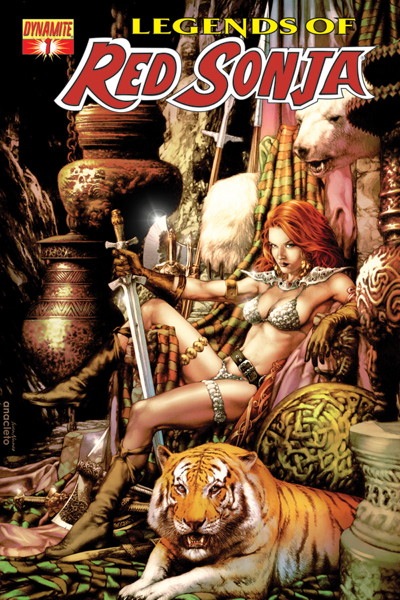
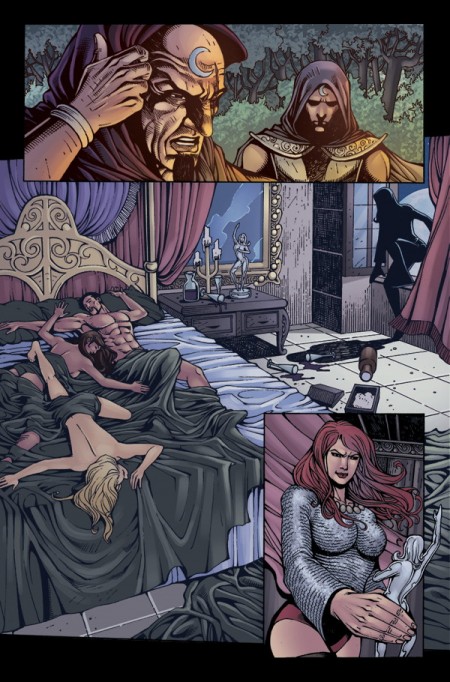
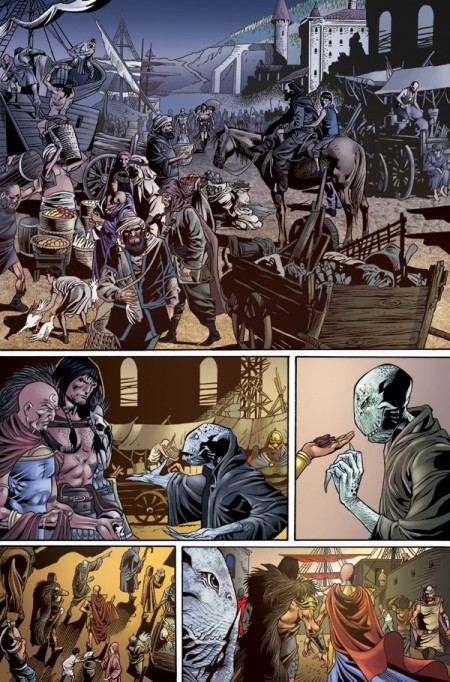
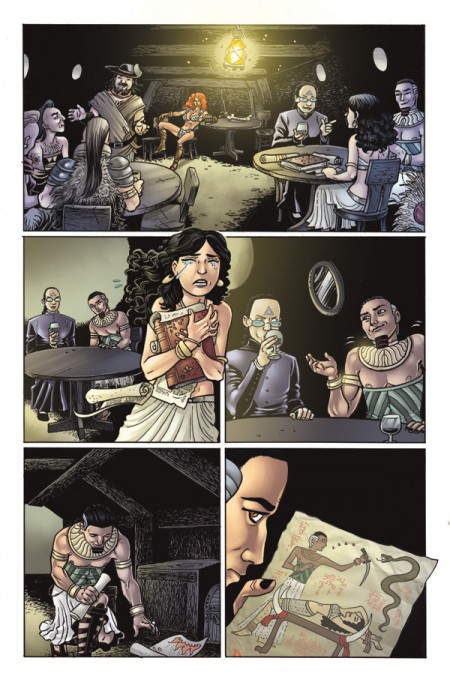
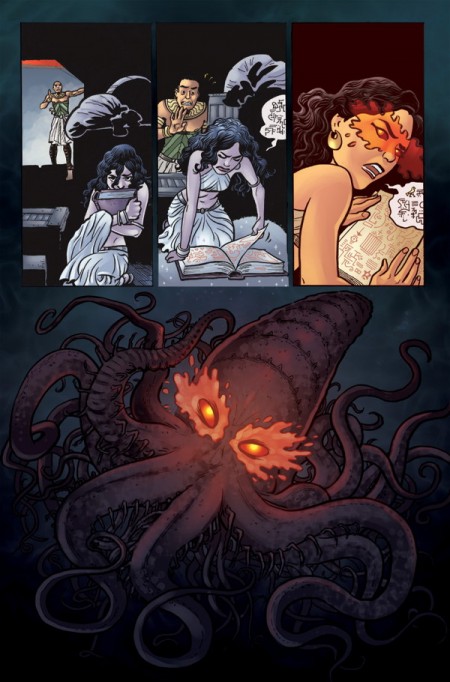
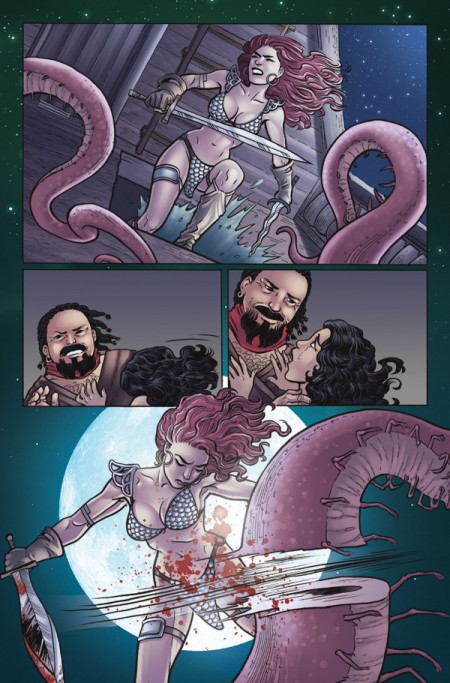
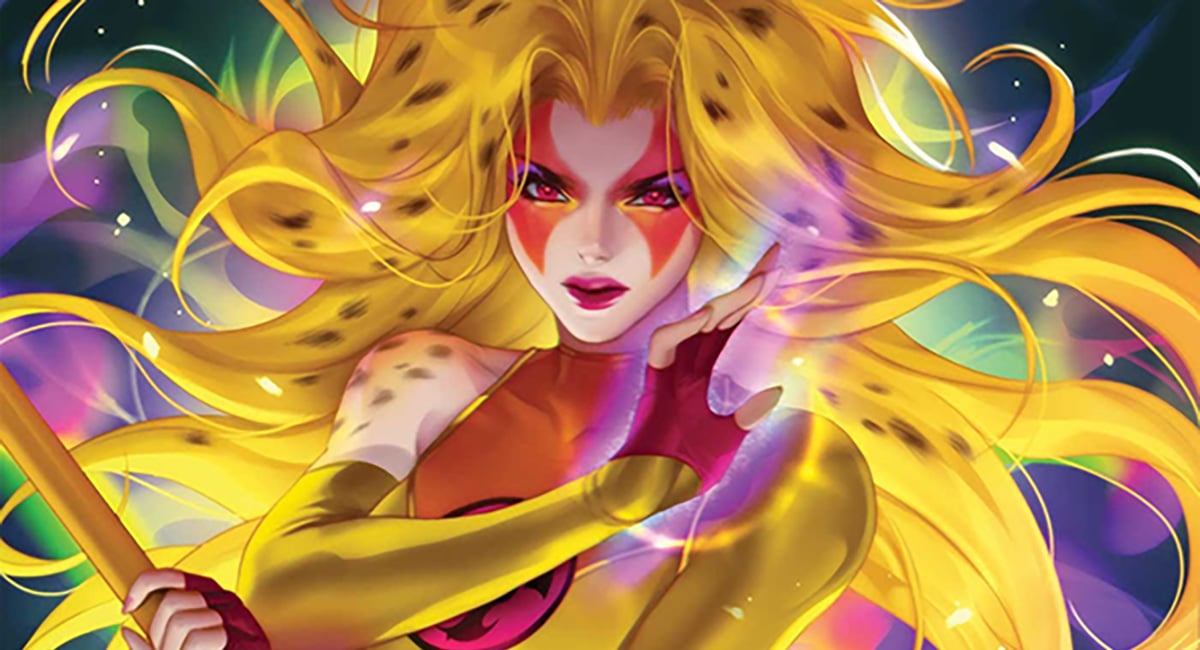
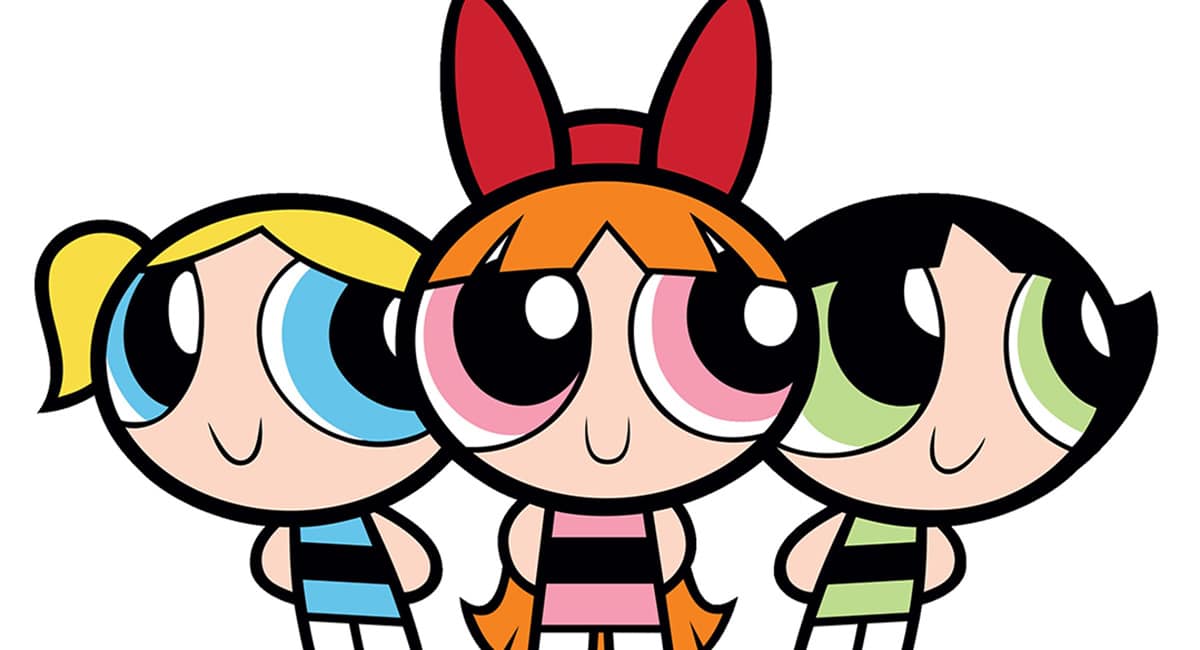
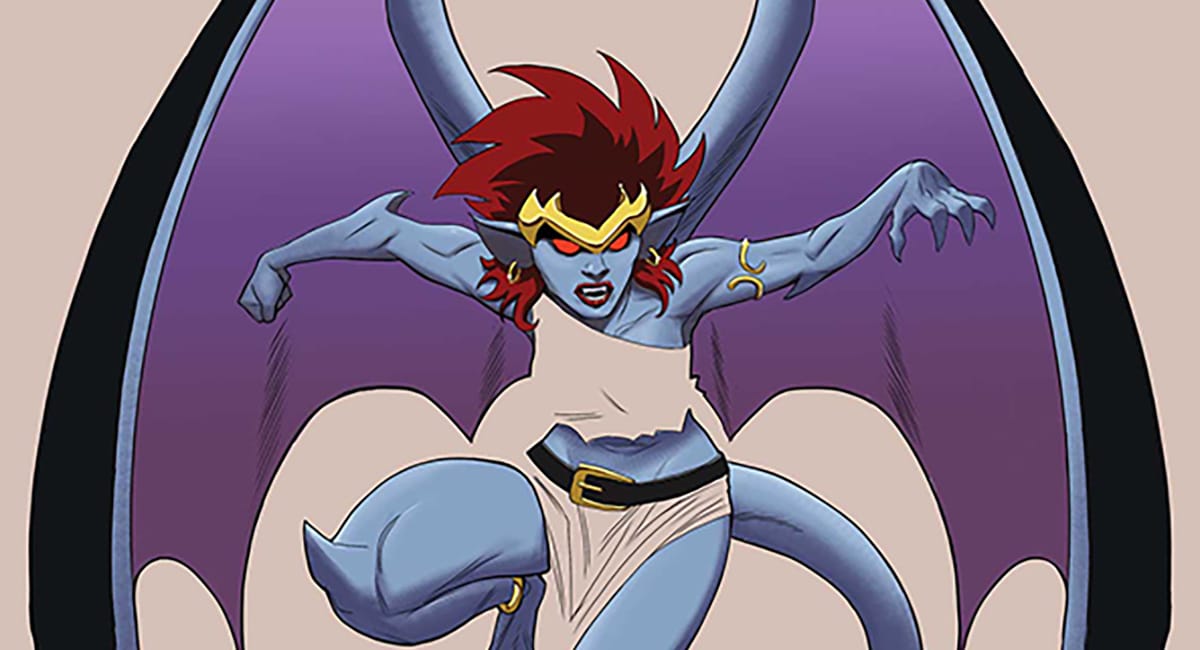
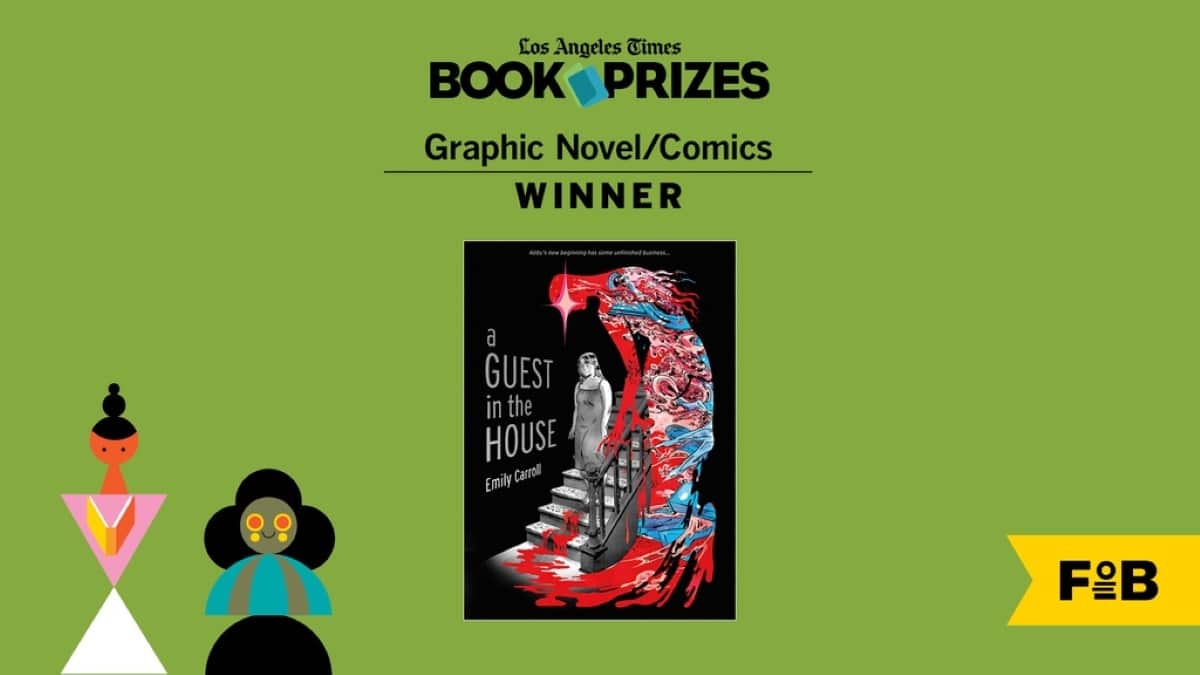

Man… It’s going to be so hard waiting for the trade, so I can get all the covers and variants and what not…
But yeah… there are some awesome creators involved (include Frank Thorne)!
SUPER excited for this, especially since Simone’s main Red Sonja title just keeps getting better with each issue.
Comments are closed.